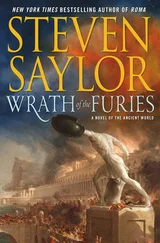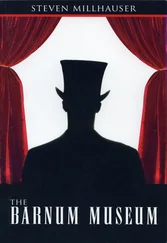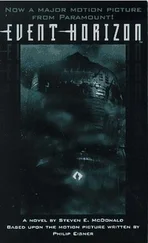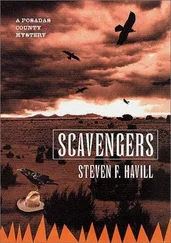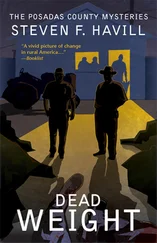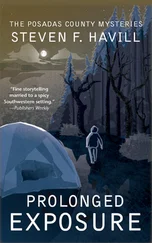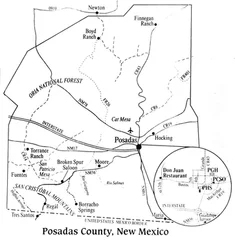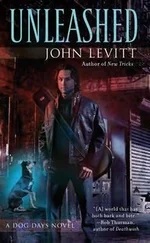Steven Levitt - Freakonomics
Здесь есть возможность читать онлайн «Steven Levitt - Freakonomics» весь текст электронной книги совершенно бесплатно (целиком полную версию без сокращений). В некоторых случаях можно слушать аудио, скачать через торрент в формате fb2 и присутствует краткое содержание. Год выпуска: 2005, ISBN: 2005, Издательство: HarperCollins Publishers Ltd., Жанр: Прочая научная литература, на английском языке. Описание произведения, (предисловие) а так же отзывы посетителей доступны на портале библиотеки ЛибКат.
- Название:Freakonomics
- Автор:
- Издательство:HarperCollins Publishers Ltd.
- Жанр:
- Год:2005
- ISBN:ISBN 0-06-083822-1
- Рейтинг книги:5 / 5. Голосов: 1
-
Избранное:Добавить в избранное
- Отзывы:
-
Ваша оценка:
- 100
- 1
- 2
- 3
- 4
- 5
Freakonomics: краткое содержание, описание и аннотация
Предлагаем к чтению аннотацию, описание, краткое содержание или предисловие (зависит от того, что написал сам автор книги «Freakonomics»). Если вы не нашли необходимую информацию о книге — напишите в комментариях, мы постараемся отыскать её.
Freakonomics — читать онлайн бесплатно полную книгу (весь текст) целиком
Ниже представлен текст книги, разбитый по страницам. Система сохранения места последней прочитанной страницы, позволяет с удобством читать онлайн бесплатно книгу «Freakonomics», без необходимости каждый раз заново искать на чём Вы остановились. Поставьте закладку, и сможете в любой момент перейти на страницу, на которой закончили чтение.
Интервал:
Закладка:
Two sumo whistleblowers die mysteriously: See Sheryl WuDunn, “Sumo Wrestlers (They’re BIG) Facing a Hard Fall,” New York Times, June 28, 1996; and Anthony Spaeth, “Sumo Quake: Japan’s Revered Sport Is Marred by Charges of Tax Evasion, Match Fixing, Ties to Organized Crime, and Two Mysterious Deaths,” reporting by Irene M. Kunii and Hiroki Tashiro, Time (International Edition), September 30,1996.
THE BAGEL MAN: Paul Feldman was looking for a research economist to take an interest in his data, and brought himself to Steven Levitt’s attention. (Several other scholars had passed.) Levitt and then Dubner subsequently visited Feldman’s bagel operation near Washington, D.C. Their research led to an article that was substantially similar to the version of the story published here: Stephen J. Dubner and Steven D. Levitt, “What the Bagel Man Saw,” The New York Times Magazine, June 6, 2004. Levitt is also writing an academic paper about Feldman’s bagel operation. / 47 The “Beer on the Beach” study is discussed in Richard H. Thaler, “Mental Accounting and Consumer Choice,” Marketing Science 4 (Summer 1985), pp. 119–214; also worth reading is Richard H. Thaler, The Winner’s Curse: Paradoxes and Anomalies of Economic Life (New York: Free Press, 1992).
2. HOW IS THE KU KLUX KLAN LIKE A GROUP OF REAL-ESTATE AGENTS?
UNMASKING THE KU KLUX KLAN: A number of excellent books have been written about the Ku Klux Klan. For general history, we relied most heavily on Wyn Craig Wade, The Fiery Cross: The Ku Klux Klan in America (New York: Simon & Schuster, 1987), and David M. Chalmers, Hooded Americanism: The First Century of the Ku Klux Klan, 1865–1965 (Garden City, NY: Doubleday, 1965); see also Stetson Kennedy, After Appomattox: How the South Won the War (Gainesville: University Press of Florida, 1995). Of most particular interest to us was Stetson Kennedy, The Klan Unmasked (Boca Raton: Florida Atlantic
University Press, 1990), which was originally published as I Rode with the Ku Klux Klan (London: Arco Publishers, 1954). But Stetson Kennedy himself is probably the greatest living repository of Klan lore. (For more information, see www.stetsonkennedy.com; also, many of Kennedy’s papers are housed in the Schomburg Center for Research in Black Culture in New York.) The authors visited Kennedy at his home near Jacksonville, Florida, interviewing him and availing ourselves of his extensive collection of Klan paraphernalia and documentation. (We also tried on his Klan robes.) We are most grateful for his cooperation. The Harvard economist Roland G. Fryer Jr. accompanied us; he and Steven Levitt are currently collaborating on a series of papers about the Ku Klux Klan. It should be noted that Fryer was driving the rental car as we first sought out Kennedy’s house on a sandy back road. We stopped to ask a neighbor for directions. Kennedy is still considered an enemy in Klan circles, and the neighbor was plainly protective of Kennedy’s whereabouts. So he peered into the car—directly at Fryer, who is black—and in all earnestness asked, “Y’all ain’t Klan, are ya?” Fryer assured him we were not.
WHAT HAPPENED TO TERM-LIFE RATES? See Jeffrey R. Brown and Austan Goolsbee, “Does the Internet Make Markets More Competitive? Evidence from the Life Insurance Industry,” Journal of Political Economy 110, no. 3 (June 2002), pp. 481–507.
SUPREME COURT JUSTICE LOUIS D. BRANDEIS writing that “Sunlight is said to be the best of disinfectants”: See Louis D. Brandeis, Other People’s Money—and How Bankers Use It (New York: Frederick A. Stokes, 1914).
THE BRAND-NEW USED-CAR CONUNDRUM: This thesis, and indeed much of what we think today about “asymmetric information,” stems from a paper that George A. Akerlof wrote during his first year as an assistant professor at Berkeley in 1966–67. It was rejected three times—two of the journals told Akerlof
that they “did not publish papers on topics of such triviality,” as he later recalled—before being published as George A. Akerlof, “The Market for ‘Lemons’: Quality Uncertainty and the Market Mechanism,” Quarterly Journal of Economics, August 1970. Some thirty years later, the paper won Akerlof the Nobel Prize in Economics; he is widely considered the nicest man to have ever won the award.
THE ENRON TAPES: As of this writing, the tapes could be heard on http:// www.cbsnews.com/stories/2004/06/01/eveningnews/main6_20626.shtml. See also Richard A. Oppel Jr., “Enron Traders on Grandma Millie and Making Out Like Bandits,” New York Times, June 13, 2004.
ARE ANGIOPLASTIES NECESSARY? See Gina Kolata, “New Heart Studies Question the Value of Opening Arteries,” New York Times, March 21, 2004.
THE REAL REAL-ESTATE STORY, REVISITED: See Steven D. Levitt and Chad Syverson, “Market Distortions When Agents Are Better Informed: A Theoretical and Empirical Exploration of the Value of Information in Real-Estate Transactions,” National Bureau of Economic Research working paper, 2005.
TRENT LOTT, NOT-SO-SECRET SEGREGATIONIST? The circumstances surrounding Lott’s damaging comments are well summarized in Dan Goodgame and Karen Tumulty, “Lott: Tripped Up by History,” Time.com/cnn.com, December 16, 2002.
THE WEAKEST LINK: See Steven D. Levitt, “Testing Theories of Discrimination: Evidence from The Weakest Link,” Journal of Law and Economics 17 (October 2004), pp. 431–52. / 79 The theory of taste-based discrimination originates with Gary S. Becker, The Economics of Discrimination (Chicago: University of Chicago Press, 1957). / 79 The theory of information-based discrimination is derived from a number of papers, including Edmund Phelps, “A Statistical
Theory of Racism and Sexism,” American Economic Review 62, no. 4 (1972), pp. 659–61; and Kenneth Arrow, “The Theory of Discrimination,” Discrimination in Labor Markets, ed. Orley Ashenfelter and Albert Rees (Princeton, N.J.: Princeton University Press, 1973).
THE ONLINE DATING STORY: See Dan Ariely, Gьnter J. Hitsch, and Ali Hortaзsu, “What Makes You Click: An Empirical Analysis of Online Dating,” University of Chicago working paper, 2004.
VOTERS LYING ABOUT DINKINS / GIULIANI: See Timur Kuran, Private Truths, Public Lies: The Social Consequences of Preference Falsification (Cambridge, Mass.: Harvard University Press, 1995); also Kevin Sack, “Governor Joins Dinkins Attack Against Rival,” New York Times, October 27, 1989; and Sam Roberts, “Uncertainty over Polls Clouds Strategy in Mayor Race,” New York Times, October 31, 1989.
VOTERS LYING ABOUT DAVID DUKE: See Kuran, Private Truths, Public Lies; also Peter Applebome, “Republican Quits Louisiana Race in Effort to Defeat Ex-Klansman,” New York Times, October 5, 1990; and Peter Applebome, “Racial Politics in South’s Contests: Hot Wind of Hate or Last Gasp?” New York Times, November 5, 1990.
DAVID DUKE, MASTER OF INFORMATION ABUSE: Among the many helpful sources for this material were Karen Henderson, “David Duke’s Work-Release Program,” National Public Radio, May 14, 2004; and the exhaustive John McQuaid, “Duke’s Decline,” New Orleans Times-Picayune, April 13,2003.
3. WHY DO DRUG DEALERS STILL LIVE WITH THEIR MOMS?
JOHN KENNETH GALBRAITH’S “CONVENTIONAL WISDOM”: See “The Concept of the Conventional Wisdom,” the second chapter of The Affluent Society (Boston: Houghton Mifflin, 1958).
MITCH SNYDER AND THE HOMELESS MILLIONS: The controversy over Snyder’s activism was covered widely, particularly in Colorado newspapers, during the early 1980s and was revisited in 1990 when Snyder committed suicide. A good overview is provided in Gary S. Becker and Guity Nashat Becker, “How the Homeless ‘Crisis’ Was Hyped,” in The Economics of Life (New York: McGraw-Hill, 1997), pp. 175–76; the chapter was adapted from a 1994 Business Week article by the same authors.
Читать дальшеИнтервал:
Закладка:
Похожие книги на «Freakonomics»
Представляем Вашему вниманию похожие книги на «Freakonomics» списком для выбора. Мы отобрали схожую по названию и смыслу литературу в надежде предоставить читателям больше вариантов отыскать новые, интересные, ещё непрочитанные произведения.
Обсуждение, отзывы о книге «Freakonomics» и просто собственные мнения читателей. Оставьте ваши комментарии, напишите, что Вы думаете о произведении, его смысле или главных героях. Укажите что конкретно понравилось, а что нет, и почему Вы так считаете.

